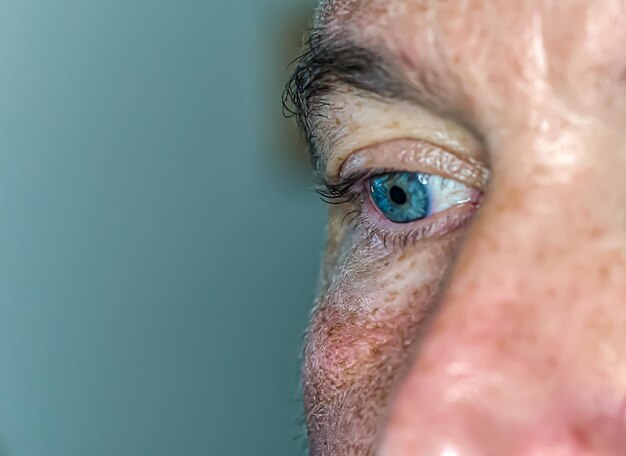Understanding Cataracts: Composition and More
Imagine looking through a frosted window. This is similar to what people with cataracts experience. Cataracts are a common eye condition that develops as we age, and understanding their makeup can help demystify this visual ailment. Let's dive into the world of cataracts and uncover what they're made of, why they occur, and what options are available for management.
What Exactly Is a Cataract?
A cataract forms when proteins in the eye's lens start to clump together, leading to clouded vision. The lens, located behind the iris and pupil, is typically clear and helps to focus light onto the retina. However, with cataracts, this clarity diminishes.
The Composition of Cataracts
Cataracts primarily consist of aggregated proteins and fibers. As these proteins break down, they accumulate and cause the lens to become less transparent. This breakdown is a natural part of aging, but certain factors can accelerate the process.
Key Components:
- Proteins and Water: Normally, the lens is composed of water and proteins arranged in a precise way to ensure clarity. Disruptions in this arrangement lead to a cataract.
- Crystallin Proteins: These structural proteins maintain the lens's transparency and flexibility, but age-related changes can cause them to clump and cloud the lens.
Factors Contributing to Cataract Formation
While age is the most common factor contributing to cataract formation, several other influences can play a role:
Age and Cataracts
Aging is the most significant factor. Over time, exposure to sunlight, changes in the eye, and metabolic processes contribute to changes in the lens.
Medical Conditions
Conditions such as diabetes, high blood pressure, or obesity are associated with an increased risk of cataracts. Medications like long-term steroids can also elevate the risk.
Lifestyle Choices
Habits such as smoking, excessive alcohol consumption, and poor nutrition can impact cataract development. UV ray exposure without adequate eye protection also exacerbates the risk.
Checklist for Reducing Cataract Risks:
- 🍏 Eat a balanced diet rich in antioxidants.
- 😎 Wear sunglasses with UV protection.
- 🚭 Avoid smoking and limit alcohol intake.
- 🔍 Get regular eye check-ups to monitor changes.
Types of Cataracts
Cataracts can manifest in various forms, each affecting vision differently:
Nuclear Cataracts
These cataracts form in the center of the lens and primarily affect distance vision. They are typically associated with aging and may initially improve near vision temporarily.
Cortical Cataracts
These occur as white, wedge-like opacities starting at the lens's periphery, progressing toward the center. They often lead to problems with glare.
Posterior Subcapsular Cataracts
These develop at the back of the lens and can interfere significantly with reading vision, reduce vision in bright light, and cause glare or halos around lights.
How Are Cataracts Diagnosed?
An ophthalmologist can diagnose cataracts through a comprehensive eye exam, including:
- Visual Acuity Test: Measures vision clarity at various distances.
- Slit-Lamp Examination: Enables detailed inspection of the eye's structures.
- Retinal Exam: By dilating the pupils, doctors can examine the back of the eye.
Management and Treatment
While lifestyle changes can slow cataract progression, surgery is the only effective treatment for removing and replacing the clouded lens.
Cataract Surgery Overview
This common procedure involves replacing the clouded lens with an artificial intraocular lens (IOL). Advances in technology have made cataract surgery safer and more effective.
Steps in Surgery:
- 🌟 Local anesthesia application.
- ✂️ A tiny incision is made, and the cataract is broken up using ultrasound waves.
- 🆕 An IOL is inserted to restore clear vision.
Post-Surgery Considerations
Most people experience improved vision rapidly but might need to wear glasses for reading or close work. Regular follow-ups ensure optimal recovery.
Recovery Tips:
- 😴 Rest eyes frequently.
- 🚫 Avoid strenuous activities as recommended.
- 💧 Administer prescribed eye drops to aid healing.
The Future of Cataract Solutions
Research continues to explore non-surgical treatments and more advanced surgical techniques. Genetic research and innovative technologies are promising areas, potentially offering efficient alternatives and prevention strategies.
Summary of Insights
- 🔍 Cataracts are formed from protein clumping in the eye lens, leading to vision clouding.
- 🕰️ Age is the most significant factor, but lifestyle and medical conditions also influence risk.
- 🚫 Preventive actions, like wearing UV-protective sunglasses and maintaining a healthy lifestyle, are essential.
- 🔄 Surgery is the definitive treatment, involving the replacement of the lens with an IOL.
Stay informed, protect your eyes, and maintain regular eye check-ups to manage your visual health effectively. Understanding the makeup and progression of cataracts is crucial for taking proactive steps toward preserving clear vision well into your later years.
